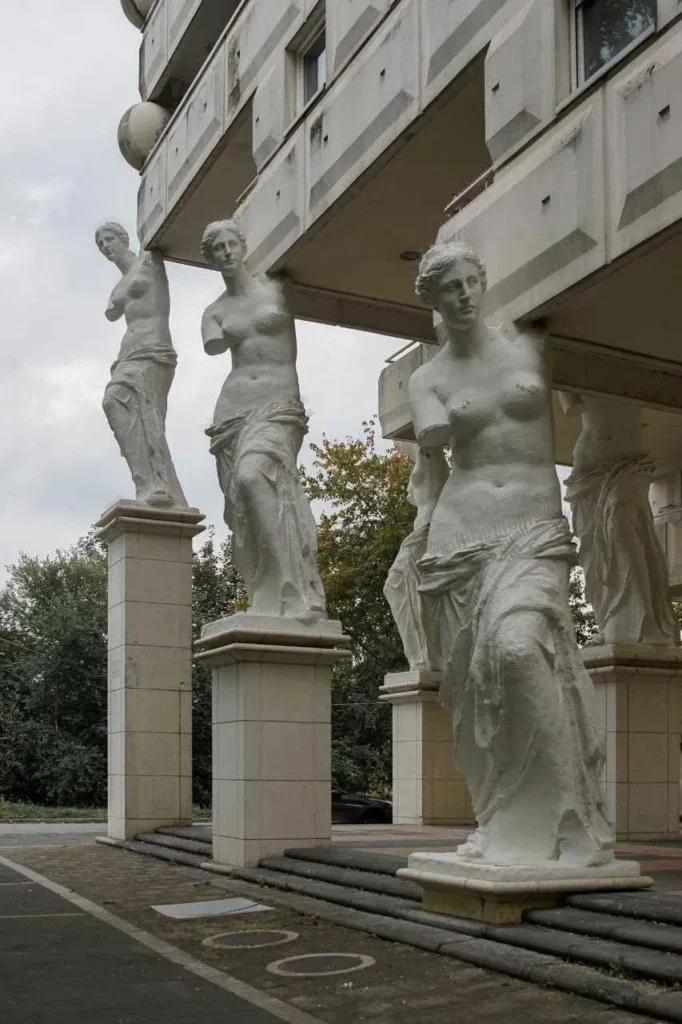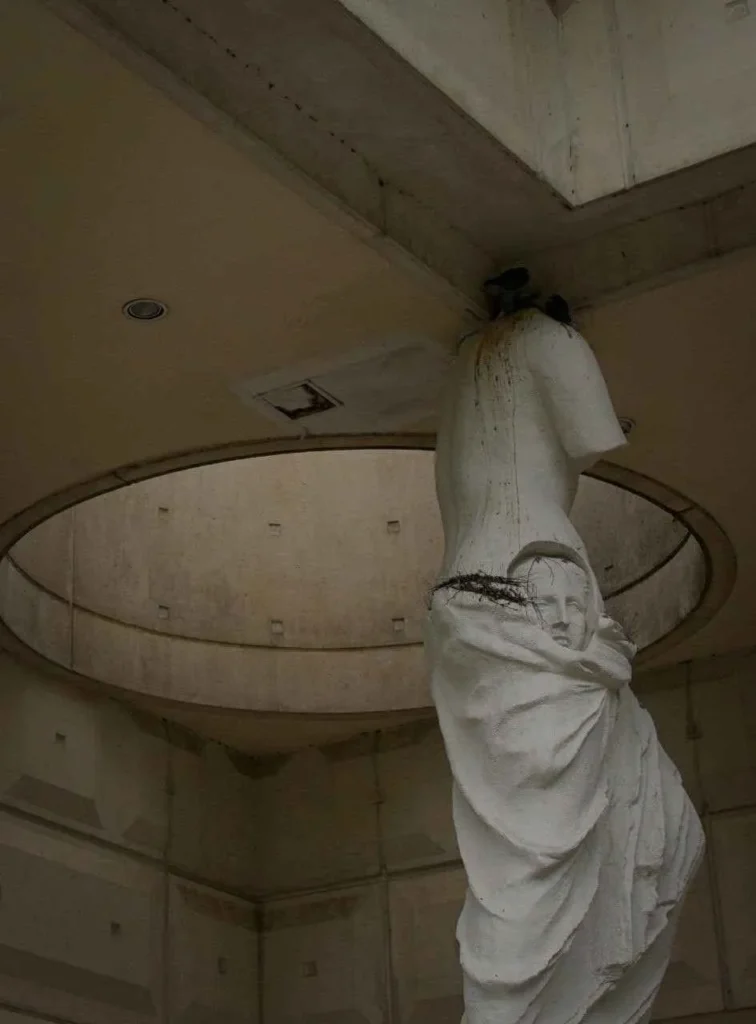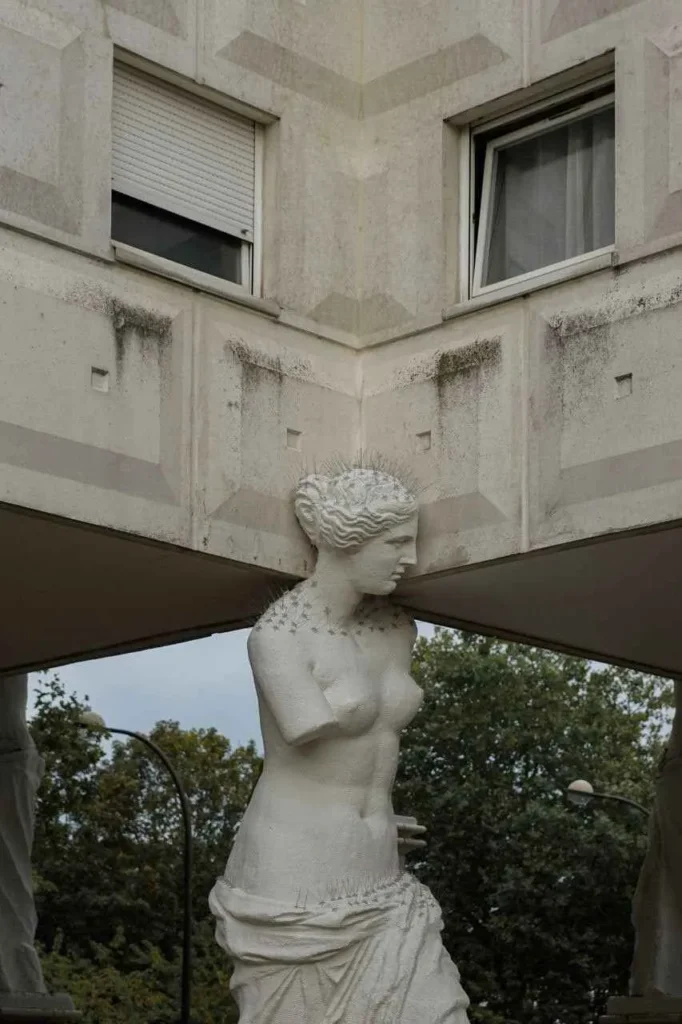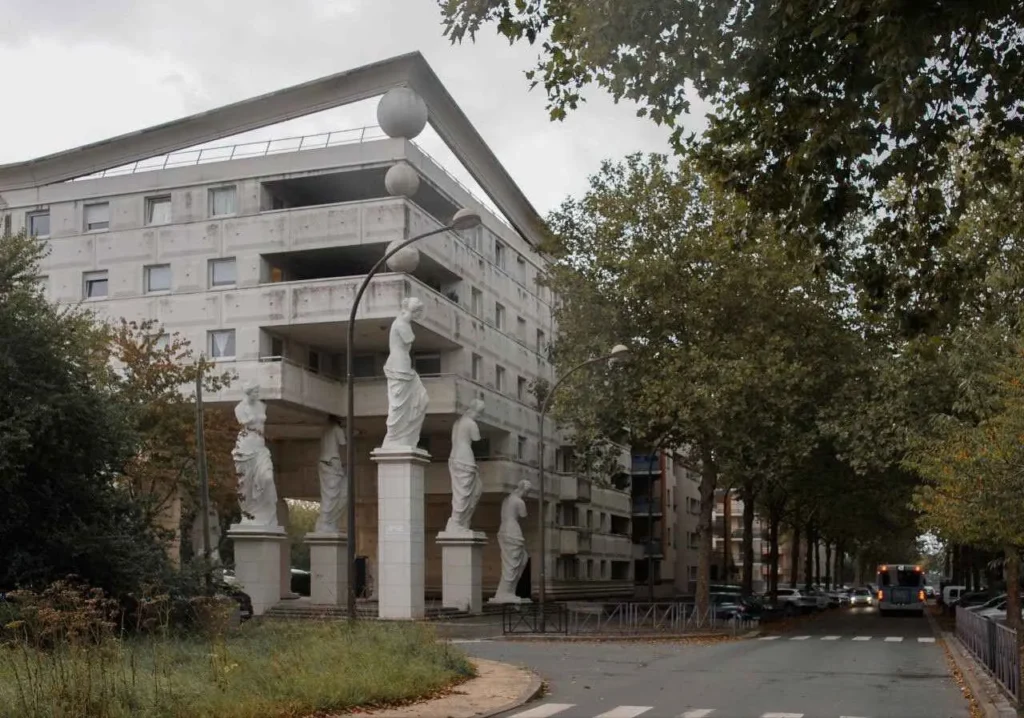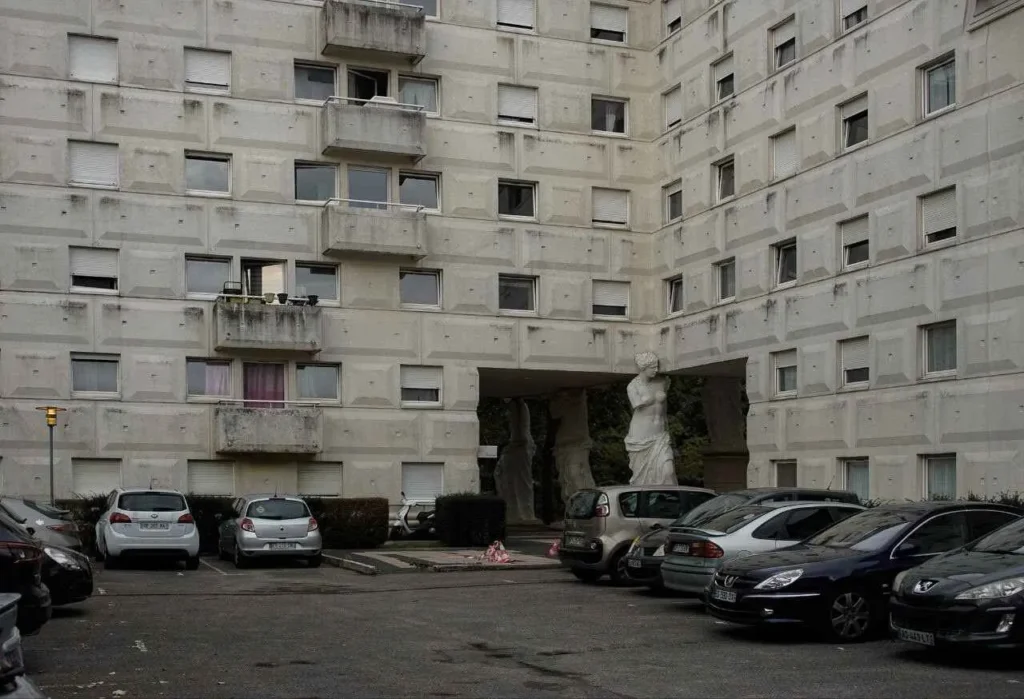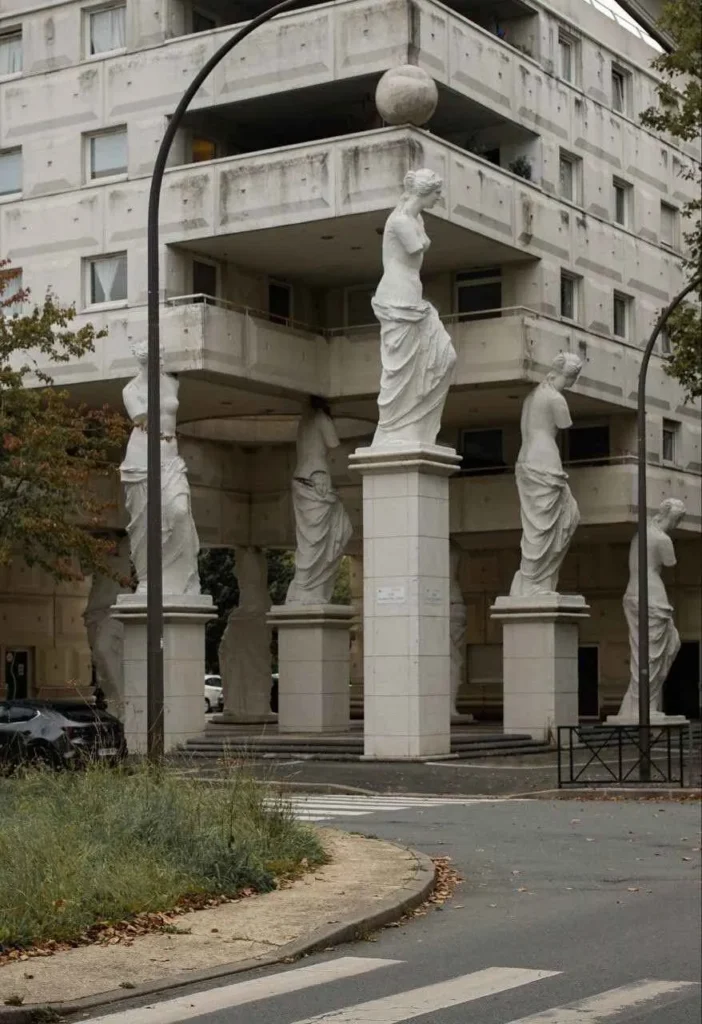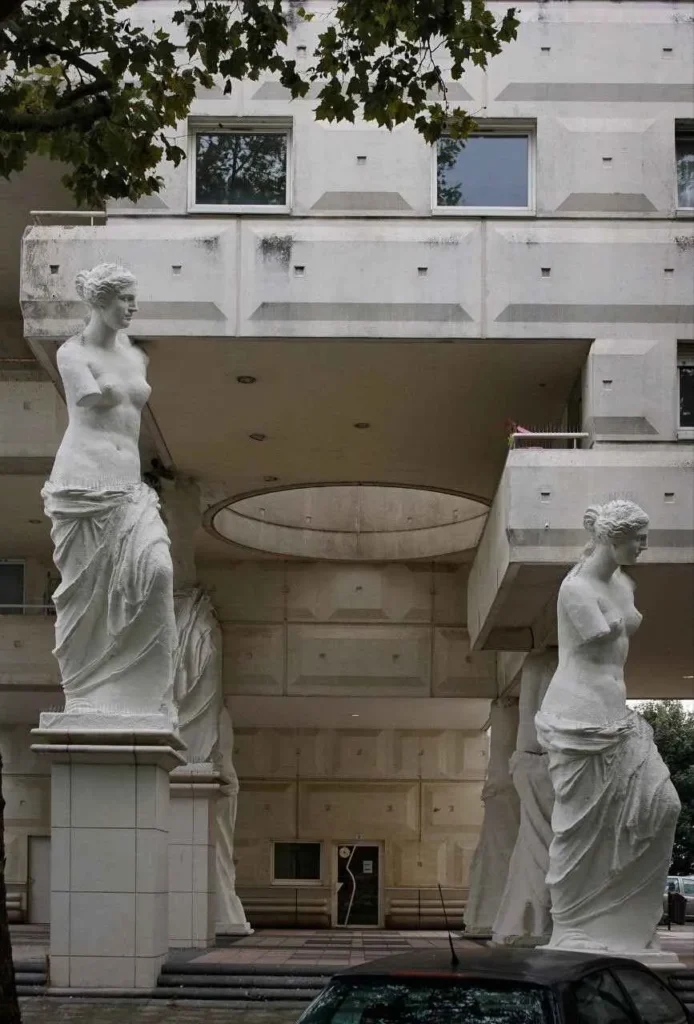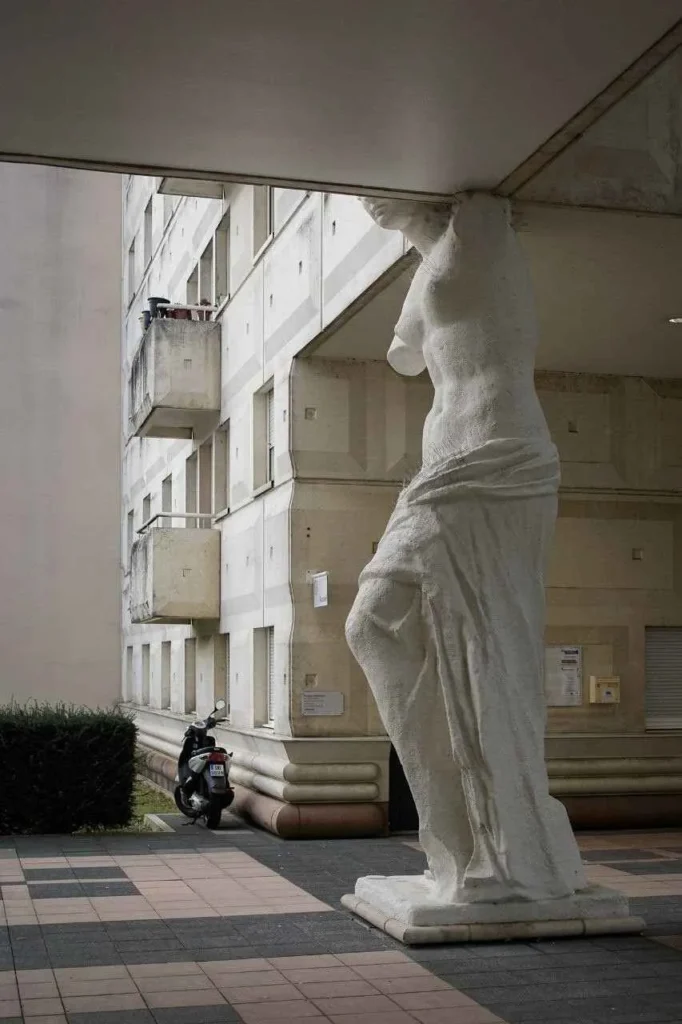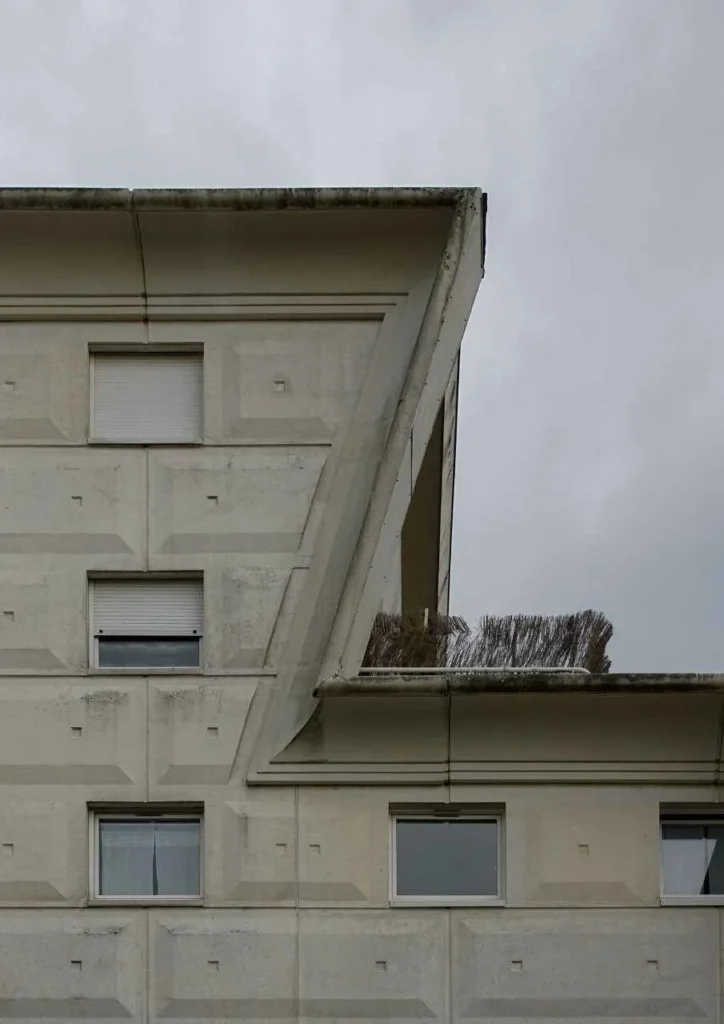On the outskirts of Paris, in the quiet town of Guyancourt, stands one of the most unique architectural works of modern French urbanism: Les Caryatides. This residential complex, built in 1992, is the work of Spanish architect Manuel Núñez-Yanowsky. The project is located in the Villaroy district, about 30 kilometers from Paris and very close to Versailles.
Venus 18
What makes this building extraordinary is not only its brutalist style but the elements that compose it: eighteen replicas of the Venus de Milo, which, as in a postmodern sculptural dream, appear to hold the building on their shoulders. In reality, the statues are decorative—the true weight rests on concrete pillars hidden behind the figures—but the visual effect is powerful. The choice of this classical sculpture was not arbitrary: its posture, with the left shoulder aligned with the right foot, allows the structural supports to be discreetly integrated.
Surreal details
These caryatids—a term inherited from classical Greek architecture referring to female-shaped columns—are reinterpreted here with a modern and provocative twist. And then you notice another detail: the heads. Or the lack of them. Some statues are incomplete, or seem to be devoured by the concrete, as if the building itself were absorbing them. In some cases, the architect simply… placed the head into the torso. As if the Venuses were pregnant with strange fetuses. As if that weren’t enough, many of them are topped with anti-pigeon spikes that resemble punk hairstyles, giving them an aesthetic that’s as anarchic as it is fascinating.
Beyond the statues, the building is filled with disconcerting elements: concrete spheres decorating the balconies, impossible angles, and proportions that defy the usual logic of urban design.
At the corner of Andrea Palladio and Frank Lloyd Wright
Les Caryatides was not meant to stand out in an extravagant way. It was built to subtly mark the intersection where it sits, without clashing with the surrounding architecture. Yet the result is quite the opposite. The complex has become a kind of visual manifesto where classical art, modern urbanism, and a touch of madness coexist without asking for permission.Today, the building continues to fascinate architects, photographers, and curious passersby. Some describe it as an impossible encounter between Andrea Palladio and Frank Lloyd Wright; others see it as a scholarly wink to art history that mocks itself. One thing is certain: Les Caryatides transforms a suburban corner into a surrealist postcard, where the everyday becomes monumental.
